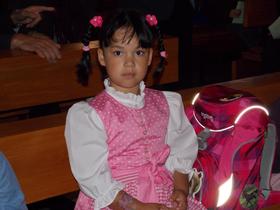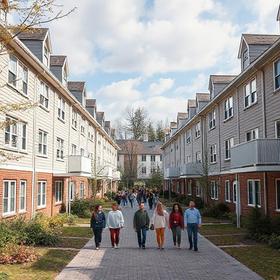Boarding School Pros and Cons: History and Common Misconceptions (Updated February 2025)
In an era shaped by social media soundbites and misinformation, boarding schools are often misunderstood. For many families, perceptions are shaped by outdated stereotypes or dramatized portrayals in film and television. Yet today’s boarding schools are more diverse, accessible, and innovative than ever before.
This article explores the history of boarding schools, highlights their benefits, addresses common misconceptions, and provides a realistic picture of what life is like in 2025 for students who choose this unique path.
A Brief History of Boarding Schools
Boarding schools in the United States trace their origins to the colonial era, when religious groups established institutions for the children of wealthy families. By the 18th and 19th centuries, schools such as Phillips Andover Academy and Phillips Exeter Academy became models of rigorous academics and moral instruction.
A darker chapter emerged in the 19th century with the creation of government-run Native American boarding schools, which sought to assimilate Indigenous children by prohibiting native languages and traditions. This legacy has prompted ongoing reflection and reconciliation efforts.
By the 20th century, progressive education philosophies reshaped boarding schools. Rigid, single-gender structures gave way to coeducation, broader course offerings, and an emphasis on character development, leadership, and personal growth. Today, boarding schools serve a wide range of students—from aspiring artists to STEM innovators—offering both structure and flexibility.
Pros of Boarding School Education Academic Excellence
Boarding schools consistently provide small class sizes, low student-teacher ratios, and access to advanced coursework. In 2025, more than 80% of boarding school graduates matriculate to top-tier colleges (NAIS). Many schools now integrate artificial intelligence, robotics, and global studies programs, preparing students for future careers.
Character Development
Life on campus encourages independence, resilience, and responsibility. Students manage daily routines, collaborate with peers from diverse backgrounds, and learn to balance academics with extracurricular commitments.
As Dr. Elaine Carter, an education researcher at Georgetown University, explains:
“Boarding schools offer more than academics—they cultivate the kind of maturity and adaptability that today’s fast-changing world demands.”
Leadership Opportunities
Boarding students lead clubs, serve in student government, and captain athletic teams. These experiences translate into strong leadership skills valued in higher education and beyond.
Personal Growth and Diversity
Exposure to classmates from around the globe enhances cultural understanding. According to Private School Review, nearly 30% of boarding school students in 2025 are international, adding a uniquely global dimension to the learning experience.
Common Misconceptions About Boarding Schools “Boarding Schools Are Only for the Wealthy”
While tuition can range from $40,000 to $80,000 annually, robust financial aid makes boarding accessible to families from many backgrounds. In fact, 28% of students receive need-based aid (NAIS), and schools are expanding scholarship programs for first-generation students. For practical strategies, see Boarding School Review’s guide on paying for boarding school.
“Students Are Cut Off from Families”
Today’s boarding schools encourage strong family involvement. Regular family weekends, visiting days, and instant communication via video calls keep parents engaged. Some schools even offer parent workshops and livestream major events.
“Boarding Schools Are Harsh and Isolating”
Homesickness is common at first, but schools invest heavily in support systems. Trained residential staff, peer mentoring, and campus wellness centers ensure students feel connected and supported.
“All Boarding Schools Are the Same”
From military academies to arts-focused schools, therapeutic programs, and STEM institutions, boarding schools are far from uniform. Families can now choose environments tailored to a child’s needs and aspirations.
“Boarding Schools Are Too Strict”
Structure remains important, but schools balance rules with flexibility. Students are encouraged to pursue passions in athletics, the arts, or entrepreneurship, while still benefiting from the accountability of a structured environment.
Cons of Boarding School Education Cost
The most significant drawback remains affordability. Even with aid, tuition and fees represent a major financial commitment. Families should carefully evaluate payment plans, financial aid options, and scholarships.
Distance From Home
Boarding requires students—and parents—to adjust to periods of separation. This can be challenging for younger students or families unaccustomed to time apart.
Rigorous Schedules
The structured environment fosters growth but can also feel demanding. Balancing academics, athletics, and extracurriculars requires time management skills and resilience.
Not for Every Child
Boarding school is a transformative experience, but it’s not suited to every personality or family situation. Parents should honestly assess whether their child thrives in independent, community-based environments.
Boarding Schools in 2025: The Evolving Landscape
Modern boarding schools continue to evolve to meet the needs of today’s students. Key trends include:
Technology Integration: Coding, cybersecurity, and AI-driven tools are now standard curriculum elements.
Mental Health Prioritization: Nearly all schools now offer on-campus mental health professionals and mindfulness programs.
Global Engagement: Partnerships with schools abroad provide exchange programs and collaborative research opportunities.
Inclusivity and Diversity: Increased efforts to recruit students from varied socioeconomic and cultural backgrounds.
According to a Wall Street Journal 2025 feature, families see boarding schools not just as elite institutions, but as incubators of leadership and innovation, reflecting a broader shift in educational priorities.
Conclusion
The pros of boarding schools—academic rigor, personal growth, leadership development, and global exposure—continue to outweigh the drawbacks for many families. Yet the cons of boarding schools—cost, distance, and intensity—remain important considerations.
Ultimately, the decision is highly personal. Parents are encouraged to research thoroughly, visit campuses, and speak with current students and alumni to understand what life at a boarding school truly entails.
As one recent graduate shared:
“Boarding school didn’t just prepare me for college—it prepared me for life.”













